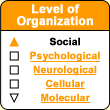|
|

 |
 |
 |
Scarcely one-third of all people who commit suicide actually leave notes behind, and very often, these notes give only a very partial explanation of why these people decided to take their own lives. The people they leave behind must struggle for weeks or even months not only with guilt and anger over the death, but also with the despair of knowing that they will never understand why it happened.
If you have lost a loved one to suicide, it is very important not to withdraw, but instead to maintain your social ties with friends or family and confide in them. Support groups for people in this situation can be very effective in helping you to get through the aftermath of a suicide. Joining such a group is not a sign of weakness, but rather of a strong determination to regain control of your life as quickly as possible.
And once you do start feeling better, remember that there's nothing wrong with laughing and enjoying life again. Tears and sadness are one way to honour the person who is gone, but rediscovering your zest for life is another. |
|
|
An estimated 9 out of 10 cases of suicide are associated with some
form of mental disorder, generally depression. In fact, more than
half of the people who commit suicide suffer from some form of depression,
such as major
depression or bipolar
disorder.
This means that suicide and depression are closely linked. The development of
both phenomena is always affected by multiple
factors. We now know that certain
molecules in the brain, such as serotonin, play a role in depression and
therefore probably in suicide as well.
But the biological changes associated with depression and suicide are often triggered
by psychological traumas arising from the individual's relationships with other
people. For this reason, a social perspective can provide greater
insight into depression, and even more so into suicide.
| First of all, the
kinds of relationships that individuals have with the people
around them often factor very heavily into the decision
to commit suicide. Second, it is estimated that on average,
every person who commits suicide leaves at least six people
behind whose lives are greatly disturbed by their loss. These
survivors often go through extremely difficult periods in
which they have nightmares, lose all interest in their usual
activities, cut themselves off from their emotions, or develop
feelings of anxiety around the place where the suicide occurred. |
|
 |
Besides family and close friends, many colleagues and acquaintances
may also be affected in various ways when someone commits suicide.
In Canada, for example, which has nearly 4 000 suicides per year
out of a population of about 32 million, an estimated 40,000 to
50,000 people are bereaved each year as the result of a suicide.
It should be borne in mind that people who are suicidal or who make suicide attempts
do not necessarily really want to die. The gesture is often really a cry for
help to the people around them. The kind of support they receive from friends
and family to
alleviate their suffering then has a decisive impact not only on the suicidal
individuals themselves, but also, as we have just seen, on their entire social
network.
For young adults in
many countries around the world, suicide is often the most
common cause of death, while for adolescents, it is the second
most common, just after automobile accidents. In the late
1990s, more adolescents and young adults died as the result
of suicide than died of cancer, heart disease, AIDS, congenital
diseases, strokes, pneumonia, flu, and chronic lung diseases
combined.
Over the past 50 years, the incidence of suicide in adolescents
and young adults has more than tripled.
|
|
|





